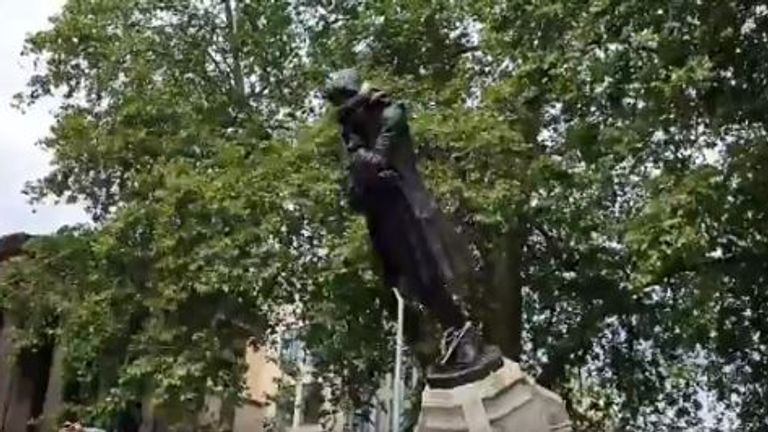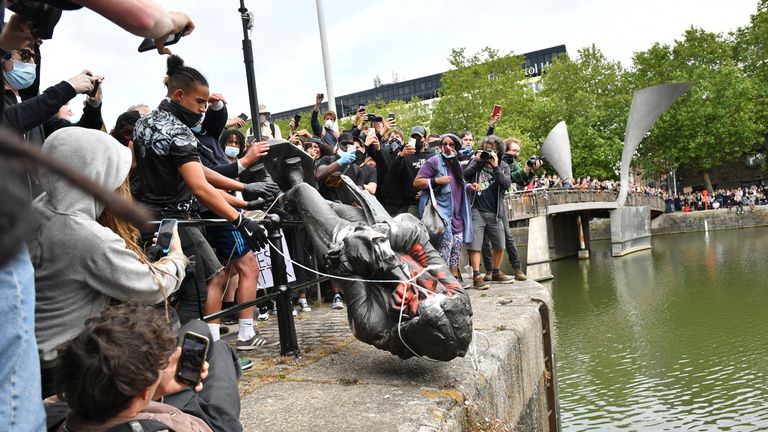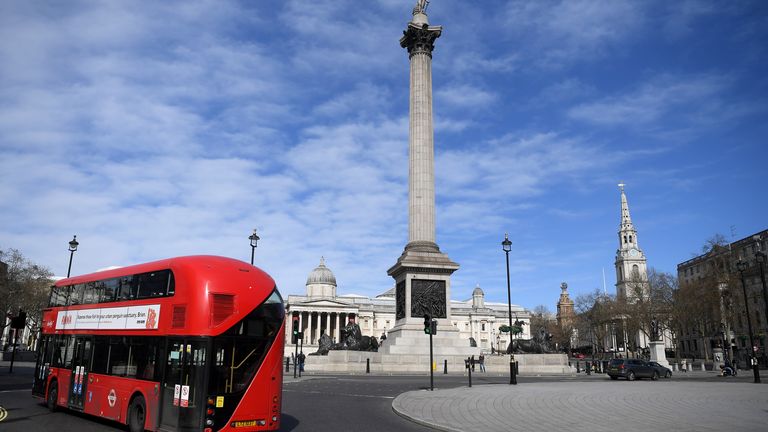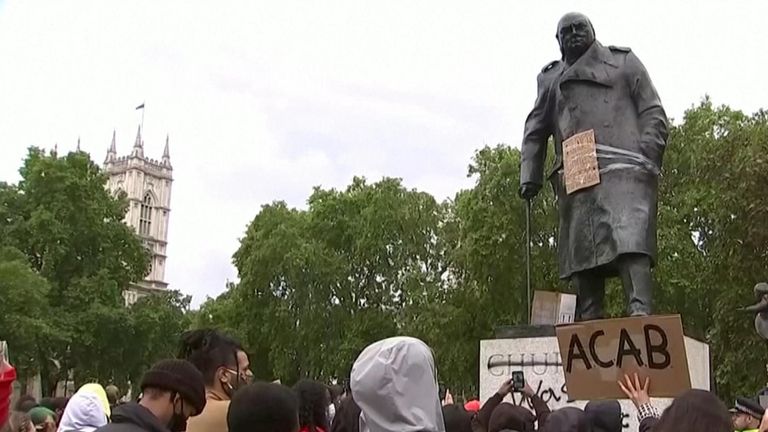Edward Colston: Why toppled statue was hated by many – and other controversial UK monuments
When a group of cheering protesters hurled a statue of slave trader Edward Colston into the sea, it marked merely the latest episode in a longstanding controversy surrounding this and various other historical monuments in the UK.
While the bronze figure was first placed in the centre of Bristol to celebrate the 17th century merchant’s philanthropy, focus in recent years had fallen on the means by which he had acquired the wealth that funded his charitable efforts.
Erected in 1895, the statue was in recognition of his work to support local schools, hospitals and almshouses, which provided housing for the poor.
He established himself trading cloth, oil, fruit and wine, but his time as a member of the Royal African Company from 1680 has been the main source of anger at his continued commemoration in the city.
Having been set up to plunder gold from the Gambia River, the mercantile company held a monopoly in England on trading in this gold, silver and ivory along Africa’s west coast.
It went on to transport “more enslaved African women, men, and children to the Americas than any other single institution during the entire period of the transatlantic slave trade”, according to historian Professor William Pettigrew.
Colston was involved with the company from 1680 until 1692 – briefly holding its most senior executive position.
During the course of his involvement, it is estimated it was responsible for shipping 84,000 men, women and children to be slaves in the Caribbean and the Americas – of which more than 19,000 died.
He later became a Tory MP for Bristol and went on to campaign to defend the city’s “right” to continue trading in enslaved Africans.
But although his philanthropy was now well under way, those Bristolians who disagreed with his religious and political beliefs were not allowed to benefit from those efforts.
Although this information was omitted entirely from a plaque attached to his statue when it was first created, it was due to become the focus of a replacement plaque announced by Bristol City Council in 2018.
However, councillors opposed the new wording and another version was proposed.
Amid pressure from the Society of Merchant Venturers – a group which descended from a guild of Bristol merchants – this version retained an emphasis on his charitable efforts, describing him as “one of this city’s greatest benefactors”.
It left out a reference to 12,000 children estimated to have been among those the Royal African Company transported as slaves.
Historian Professor Kate Williams said: “The language on the two plaques is radically different.
“The second says his wealth came from sugar etc and he was ‘also involved in the transportation’ of slaves – rather as if he sort of built boats but didn’t know what was going on.
“[Its] focus was on philanthropy. The council refused this altered plaque and the office of the mayor, Marvin Rees, who has been on TV today, rightly said it was ‘unacceptable’, particularly the lack of reference to those enslaved.
“That was in spring 2019 and the plaque has been under discussions ever since.
“Some Bristolians said to me privately that they were pessimistic about the likelihood of an agreed text and thus that the only plaque for ever more on Colston would be the one calling him ‘virtuous and wise’.”
Some people have condemned the actions of protesters in taking matters into their own hands by tearing the statue down before sending it to its current resting place on the seabed of Bristol harbour.
But those in favour of its removal will point to the fact that the seemingly intractable nature of the debate over its future would otherwise almost certainly have ensured his continued commemoration without even an acknowledgement of the central role he played in the enslavement and death of many thousands of people.
Colston’s statue has been returned to the same seas he used to profit from abject human suffering, but this act will not end the acrimonious deliberations around other prominent monuments to contentious historical figures that stand around the country. Here are a few:
Cecil Rhodes
Rhodes’s British South Africa Company founded the southern African territory of Rhodesia – now Zimbabwe and Zambia – which was named after him, and he funded a scholarship for students to study at Oxford University
However, he is seen by many as an architect of apartheid, and a statue of the British businessman and imperialist politician at the University of Cape Town was removed in 2015.
A protest movement called Rhodes Must Fall that was formed at that time continues to campaign for other statues in his honour – including one at Oxford University – to be taken down.
Arguing he was effectively a white supremacist, members of that movement point to comments including his stated view that the Anglo-Saxon race was “the first race in the world” and that “the more of the world we inhabit the better it is for the human race”.
Robert Clive
Another notable figure in Britain’s colonial past, a statue of the first British governor of the Bengal presidency stands in London’s King Charles Street.
As part of the East India Company, he is credited with seizing control of vast swathes of the Indian subcontinent by overthrowing existing rulers before looting their treasures, to make himself one of the richest businessmen in the world.
Described by historian William Dalrymple as an “unstable sociopath”, he is held responsible by many for a series of atrocities along with a revenue system and the forced cultivation of crops that led to the Bengal famine of 1770 – estimated to have killed 10 million people.
Horatio Nelson
The subject of one of London’s most iconic monuments, the 195ft-tall Nelson’s Column, the naval leader is celebrated for his role in defeating French military leader Napoleon.
He is, however, also described as a “vigorous defender” of the slave trade and sought to use his influence to counter Britain’s abolitionist movement.
Oliver Cromwell
Among Britain’s most controversial historical figures, Cromwell is considered by some to be a hero of liberty for his role in leading the Parliament of England’s armies against King Charles I during the English Civil War.
He remains deeply unpopular among others, not least in Ireland, where his actions in leading Britain’s 17th-century invasion and conquest have been characterised as genocidal towards catholics.
The best known among five public statues of him in the UK sits outside the House of Commons.
Winston Churchill
Often topping lists of “greatest Britons”, Winston Churchill is honoured with numerous monuments, the most famous located in London’s Parliament Square.
Lauded for his leadership as Britain’s wartime prime minister and opposition to Hitler’s Nazi regime, he also espoused racist views of Indians, who he said he “hated” and considered to be “a beastly people with a beastly religion”.
Source: Read Full Article







